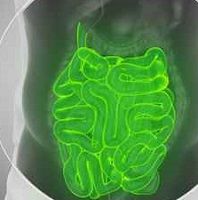Article
Liver Disease More Prevalent in Patients with Crohn's Disease
Author(s):
An analysis of more than 62,000,000 found that prevalence rates of nonalcoholic fatty liver disease were 3 times higher in patients with Crohn's disease.

A study from investigators at the Cleveland Clinic has found that patients with Crohn’s disease (CD) may be at an increased risk of nonalcoholic fatty liver disease (NALFD), nonalcoholic steatohepatitis (NASH) and nonalcoholic cirrhosis (NC).
In a study of more than 62,000,000 patients, investigators found that prevalence rates of NAFLD, NASH, and NC among patients with CD were 3 times higher than in the general population. After noting it within their own practices, investigators sought to determine whether or not patients with CD were at an increased risk of chronic liver disease.
“It’s certainly an increasingly finding in my practice in caring for patients with inflammatory bowel disease (IBD), including Crohn’s disease, and there’s currently an epidemic of fatty liver disease in the western population,” explained Benjamin Click, MD, study author and associate staff gastroenterologist at the Cleveland Clinic in an interview with MD Magazine. “So, it’s important to understand if IBD patients are at any additional or different risk for liver disease.”
Investigators used electronic health record data, obtained through a commercial database, from 26 major US heal care systems to identify patients with a diagnosis of Crohn’s disease from 1999 to 2018. Patients were identified with a Systemized Nomenclature of Medicine — Clinical Terms diagnosis of CD. Investigators used logistic regression of demographic and metabolic comorbidities to identify potential risk factors. Additionally, prevalence rates of first ever diagnosis of NAFLD, NASH, and NC after 30 days of CD diagnosis with the general population from the commercial database.
A total of 62,781,880 individuals were included within the database and investigators identified 159,290 (0.25%) individuals with CD, 467,060 (0.74%) with NAFLD, 35,890 (0.06%) with NASH and 169,700 (0.27%) with NC. The prevalence rates of NAFLD, NASH, and NC were 3 times higher among patients with a CD diagnosis. In individuals with CD, the prevalence rate of NAFLD was 2.4%, NASH was 0.3%, and NC was 0.9%.
After comparing patients with CD patients with and without NAFLD, investigators found patients with NAFLD and CD were more likely to be females, Caucasian, and elderly. They were also significantly more likely to have comorbid diabetes mellitus (DM) , obesity, and hypertension (HTN). Similarly, CD patients with NASH were more likely to be females, Caucasian, and elderly. They were also significantly more likely to have comorbid DM, obesity, and HTN. CD patients with NC were more likely to be males, Caucasian, and elderly.
Investigators concluded that traditional metabolic risk factors for nonalcoholic fatty liver disease confer risk in CD and that the prevalence of NAFLD, NASH, and NC are significantly increased in patients with CD. Authors noted that additional studies were needed to assess the impact and interaction of IBD, medications, and the evolution of NAFLD.
“This has big implications for investigating the potential mechanisms as to why that occurs and also in terms of management that we need to be watching for this, potentially screening for nonalcoholic fatty liver disease in our IBD patients, and then how this effects our current management strategies going forward is of great interest,” Click said.
This study, titled “Nonalcoholic liver disease significantly more prevalent in Crohn’s disease: a population-based study,” was presented at DDW 2019 in San Diego, CA.





